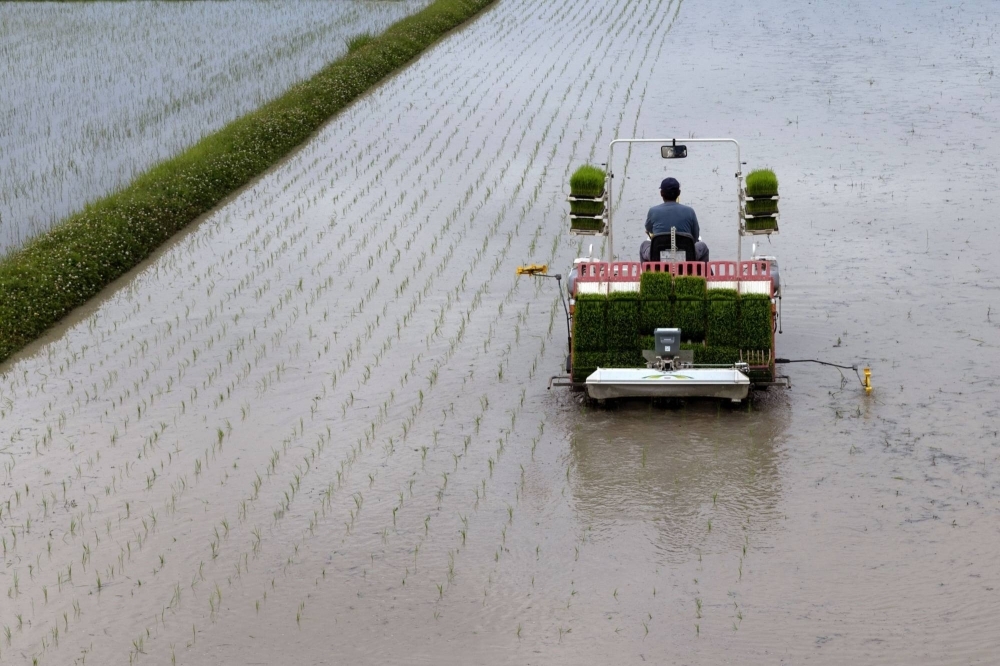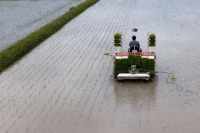Demand in Japan for rice grown for direct human consumption is expected to fall to 6.81 million tons, down by 100,000 tons from 2022 dropping for the 10th consecutive year, according to the agriculture ministry.
The figure is expected to be lowest since the start of comparable data in 1996.
With demand for rice as a staple continuing its downward trend, the ministry has been urging farmers to switch over to soybeans and wheat, as well as the rice used for animal feed.
The ministry also released a survey on rice acreage in 2023 by prefecture.
As of the end of June, 24 of the 47 prefectures had estimated their rice acreage to decrease by over 1% from the previous year, up by seven prefectures from the previous survey conducted as of the end of April.
Only Fukushima and Tochigi prefectures expected their rice acreage to rise, while the remaining 21 prefectures said their acreage will remain mostly unchanged.
In addition to the shrinking population, a drop in the average amount of rice consumed per person in Japan has led to a further decline in demand.
Regarding the latest survey, the ministry said that a demand-based adjustment to rice production and sales has started to take root.
Meanwhile, rice inventories in the private sector as of the end of June decreased by 210,000 tons from a year earlier to 1.97 million tons, reflecting a recovery in rice demand in the restaurant industry following the removal of COVID-19-related restrictions.
It was the first time in four years for the inventories to fall to the range of 1.8 million to 2 million tons, levels where rice prices stabilize.
The inventories are expected to stand at 1.84 million tons as of the end of June 2024.




